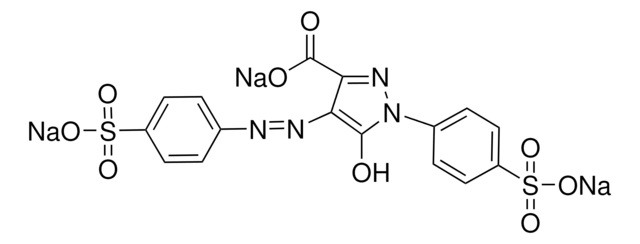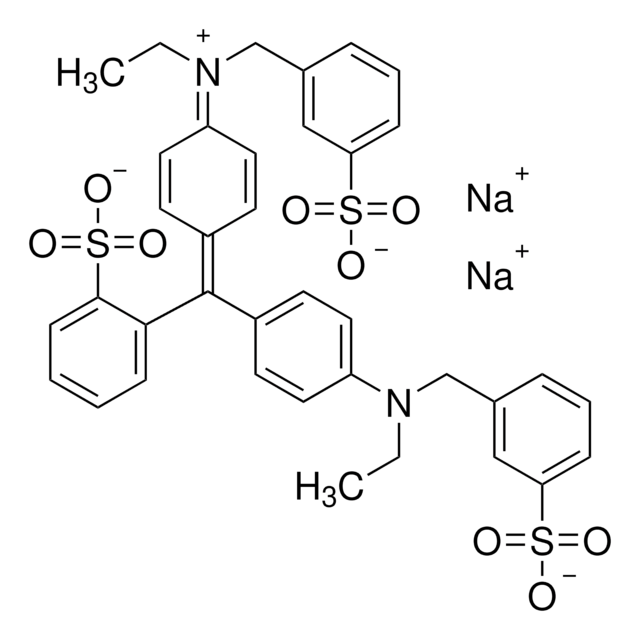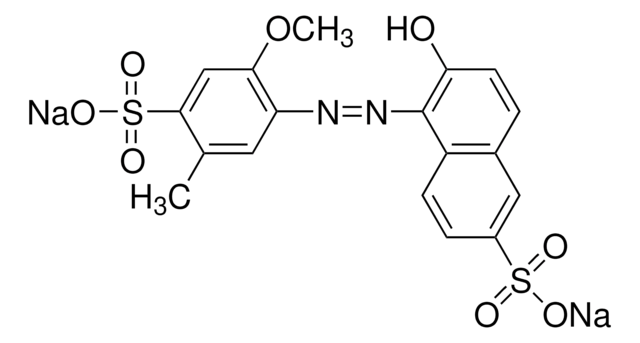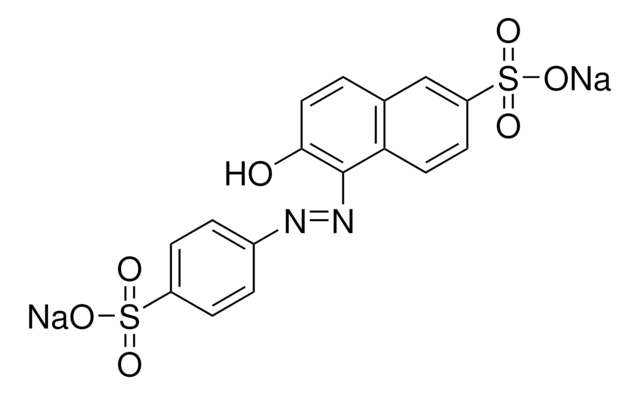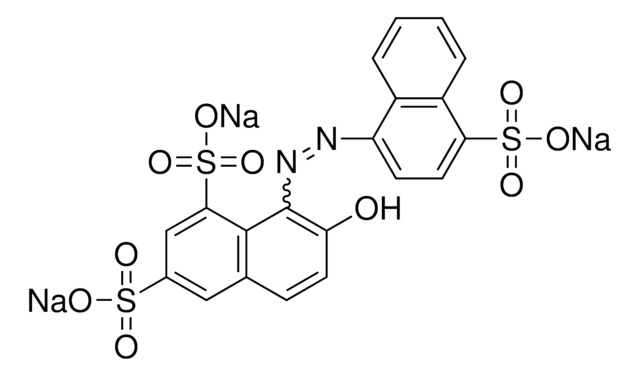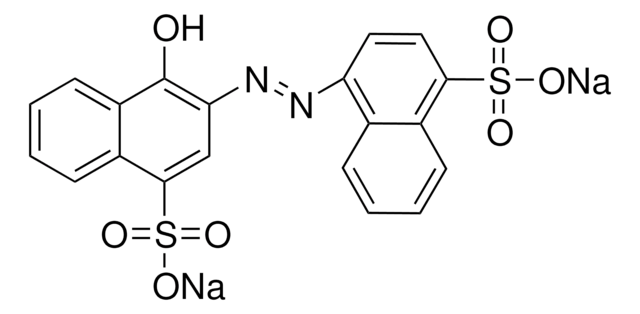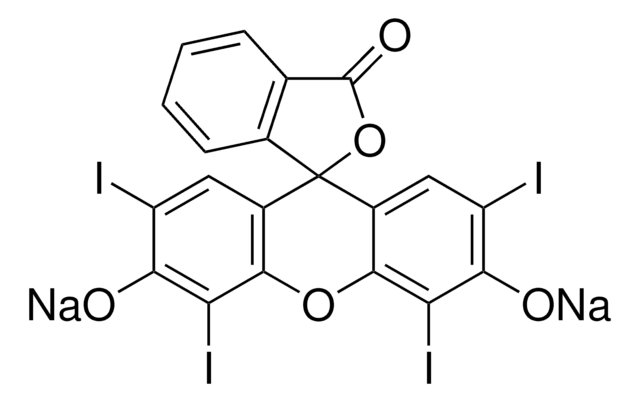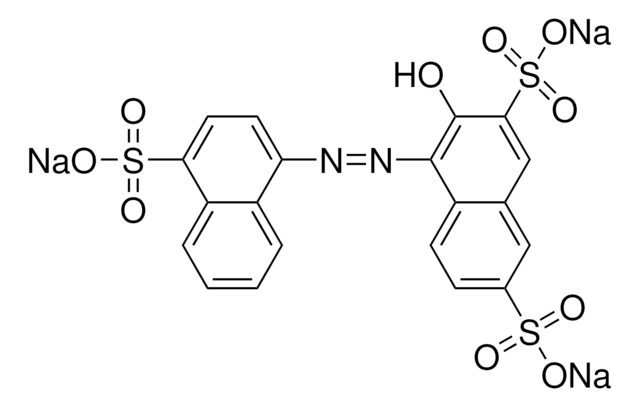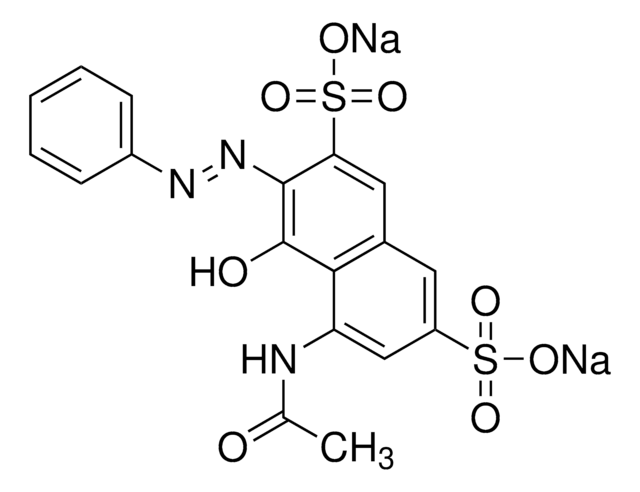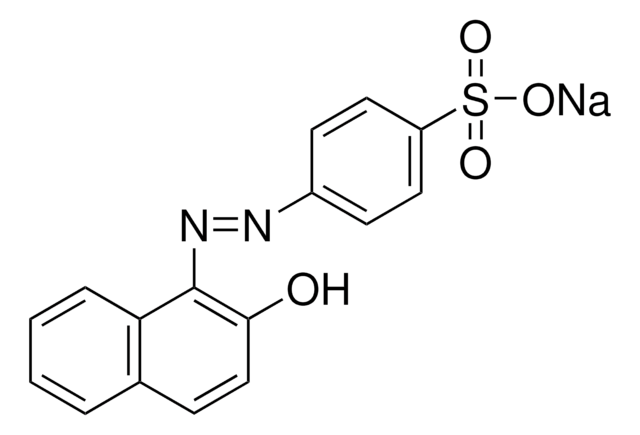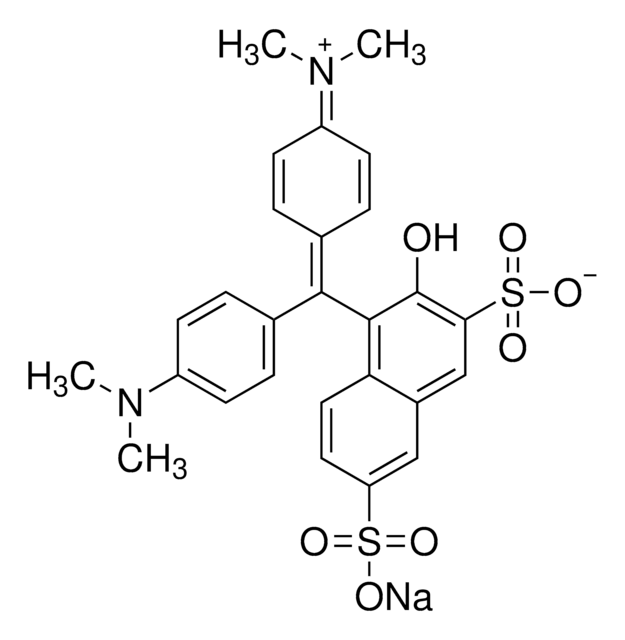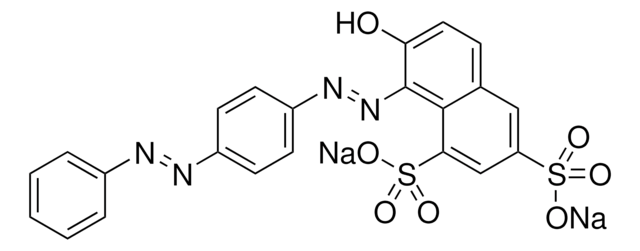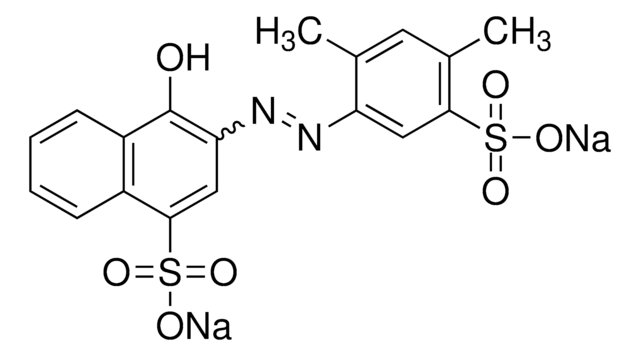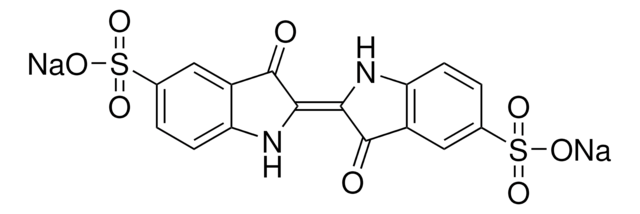52245
Carmoisine
analytical standard
Synonym(s):
Chromotrope FB, Azorubine, Food red 3, Acid Red 14, Disodium 4-hydroxy-3-[(4-sulfo-1-naphthalenyl)azo]-1-naphthalenesulfonate, Mordant Blue 79
About This Item
Recommended Products
grade
analytical standard
Quality Level
assay
≥98.0% (HPLC)
shelf life
limited shelf life, expiry date on the label
technique(s)
HPLC: suitable
gas chromatography (GC): suitable
application(s)
cleaning products
cosmetics
food and beverages
personal care
format
neat
SMILES string
[Na+].[Na+].Oc1c(cc(c2ccccc12)S([O-])(=O)=O)\N=N\c3ccc(c4ccccc34)S([O-])(=O)=O
InChI
1S/C20H14N2O7S2.2Na/c23-20-15-8-4-3-7-14(15)19(31(27,28)29)11-17(20)22-21-16-9-10-18(30(24,25)26)13-6-2-1-5-12(13)16;;/h1-11,23H,(H,24,25,26)(H,27,28,29);;/q;2*+1/p-2/b22-21+;;
InChI key
YSVBPNGJESBVRM-ZPZFBZIMSA-L
Looking for similar products? Visit Product Comparison Guide
General description
Application
- Food samples using spectrophotometric analysis technique.
- Sweets and beverages using differential pulse polarography.
- Synthetic mixtures and beverages using high performance liquid chromatography with diode array detection (HPLC-DAD).
Packaging
Storage Class
11 - Combustible Solids
wgk_germany
WGK 2
flash_point_f
437.0 °F
flash_point_c
> 225 °C
Choose from one of the most recent versions:
Already Own This Product?
Find documentation for the products that you have recently purchased in the Document Library.
Customers Also Viewed
Our team of scientists has experience in all areas of research including Life Science, Material Science, Chemical Synthesis, Chromatography, Analytical and many others.
Contact Technical Service